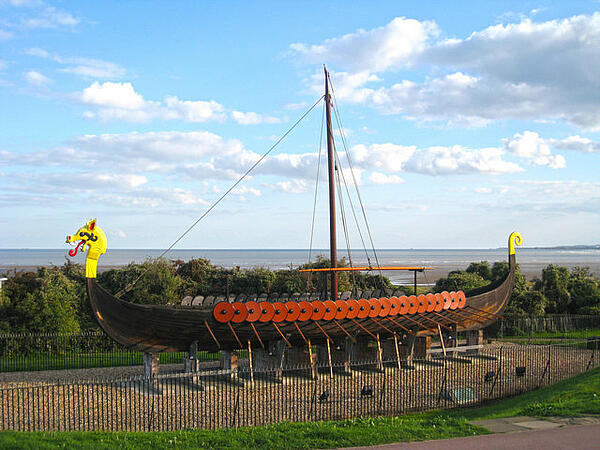Viking Place Names
For the most part, Viking place names reflect the frequent invasion of Britain by Scandinavians, which began in the 8th Century. Those who settled along the east coast were primarily Danish, while those settling on the north west coast were made up mainly of Norwegians. The differences between these two cultures resulted in a few differences in their naming traditions. One such difference is that the Danish often used a name as a prefix, while the Norwegians would often use it as a suffix.
Despite persistently attempting to settle in and conquer Great Britain, the Scandinavian invaders had little consistent impact on the country’s place names. Those trends that did appear remaining in specific areas governed by Danelaw, which included the area north and east of an ancient country-wide trackway known as Watling Street. As such, areas with strong Scandinavian influence usually only appear regions such as Yorkshire, the Lake District, Cheshire, East Anglia and the East Midlands.
The most common suffix given to place names by the Scandinavians was ‘by’, which would refer to a village that already had a name (commonly linked to a description of the area). As a result, it’s common to see place names with a combination of both English and Scandinavian influence, including Selby, which means ‘the village with willows’, Linby, which means ‘the village with lime trees’ and Utterby, which means ‘remote village’. However, there were some places named after people who lived there. This was the case for Prestby, which refers to a priest who lived in that village.

When Scandinavians create full place names, they would often refer to the people who lived there. For example, Ingleby means ‘the village of the English’, while Normanby means ‘the Norwegian’s village’.
‘Thorp’ was another suffix added to place names by the Scandinavians, and meant ‘secondary village’ or a village of less importance than another close by. For example, Scotton Thorpe in the old West Riding in Yorkshire would have referred to a place that was near Scotton. Thorpe could also be used with a direction, e.g. Westhorpe would be west of a larger settlement.
Other names and nicknames could also be added to thorpe, such as in the case of Newthorpe, Woodthorpe, Countesthorpe and Bromkinsthorpe, and this even continued after the Norman conquest in 1066.
Aside from thorpe, ‘thwaite’ was commonly used in Viking place names. ‘Thwaite’ means a clearing in a forest, meadow or paddock, and was usually preceded with either a reference to the size of the clearing or the proximity of certain types of tree. An example of the former includes Langthwaite (long clearing), while example of the latter would be Applethwaite (clearing by the Apple trees). However, there were similar examples that have uncertain origin, such as Linethwaite, which translates to ‘flax clearing’.
There are cases where Scandinavian names have been mixed with other meanings, such as where Viking names were combined with the word ‘ton’ (farm/home of), but these meanings are mainly Old English in origin. There are also cases of social titles being used to influence names, with Jarl (nobleman), hold (yeoman) and drench (free tenant) all found in place names.
There were a number of Scandinavian settlers who travelled to Ireland before colonising the northwest of England, and these settlers brought with them additional Irish influences. While these never became widespread, they did leave a mark in a number of places in northwest England, such as Mosser in Cumbria (‘near a mossy bog’).
See also:
Norman Place Names in England
Norman Place Names
The Origin of Place Names
Anglo-Saxon Place Names
The History of County Names
MLA Citation/Reference
"Viking Place Names". HistoryLearning.com. 2025. Web.
